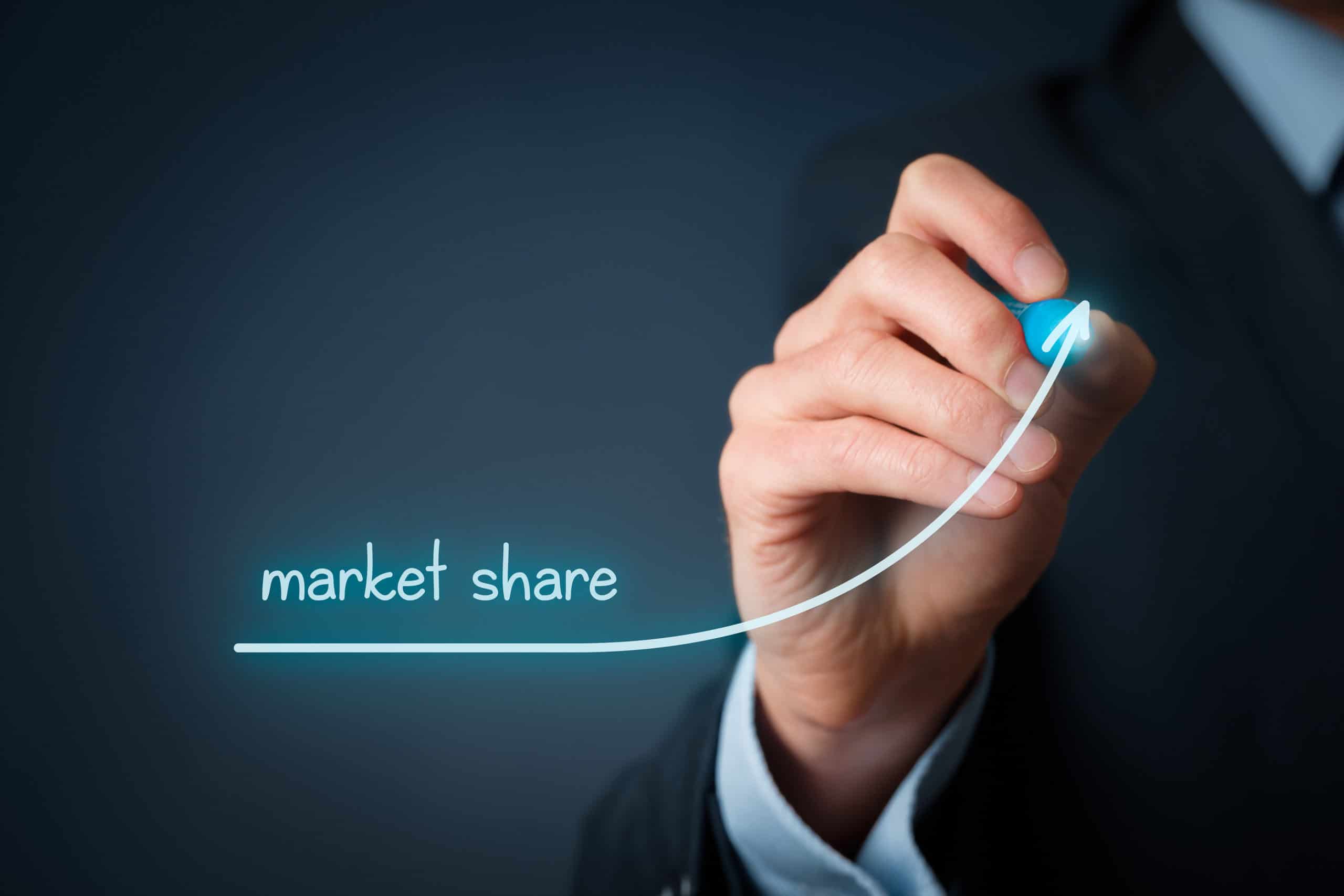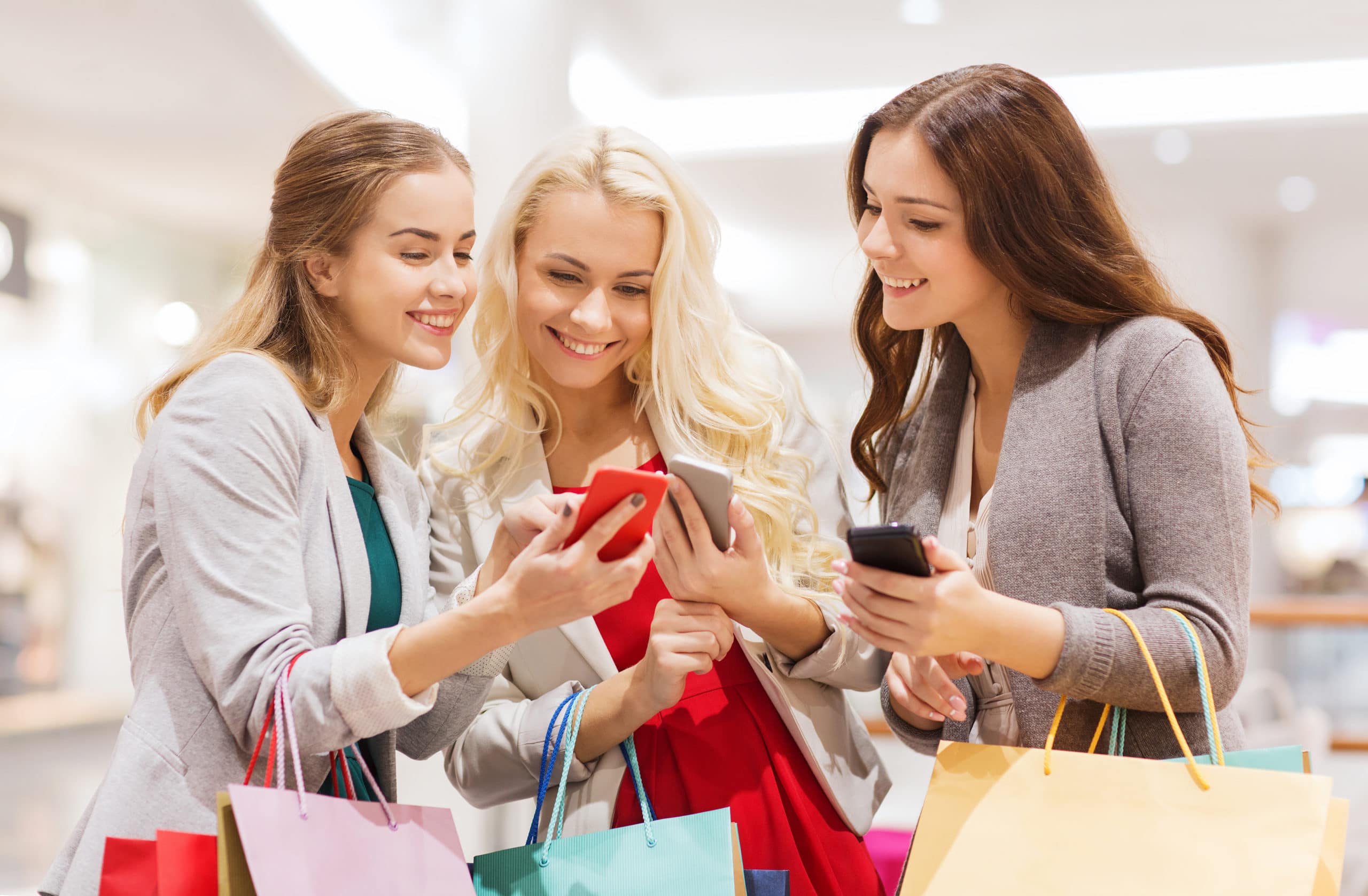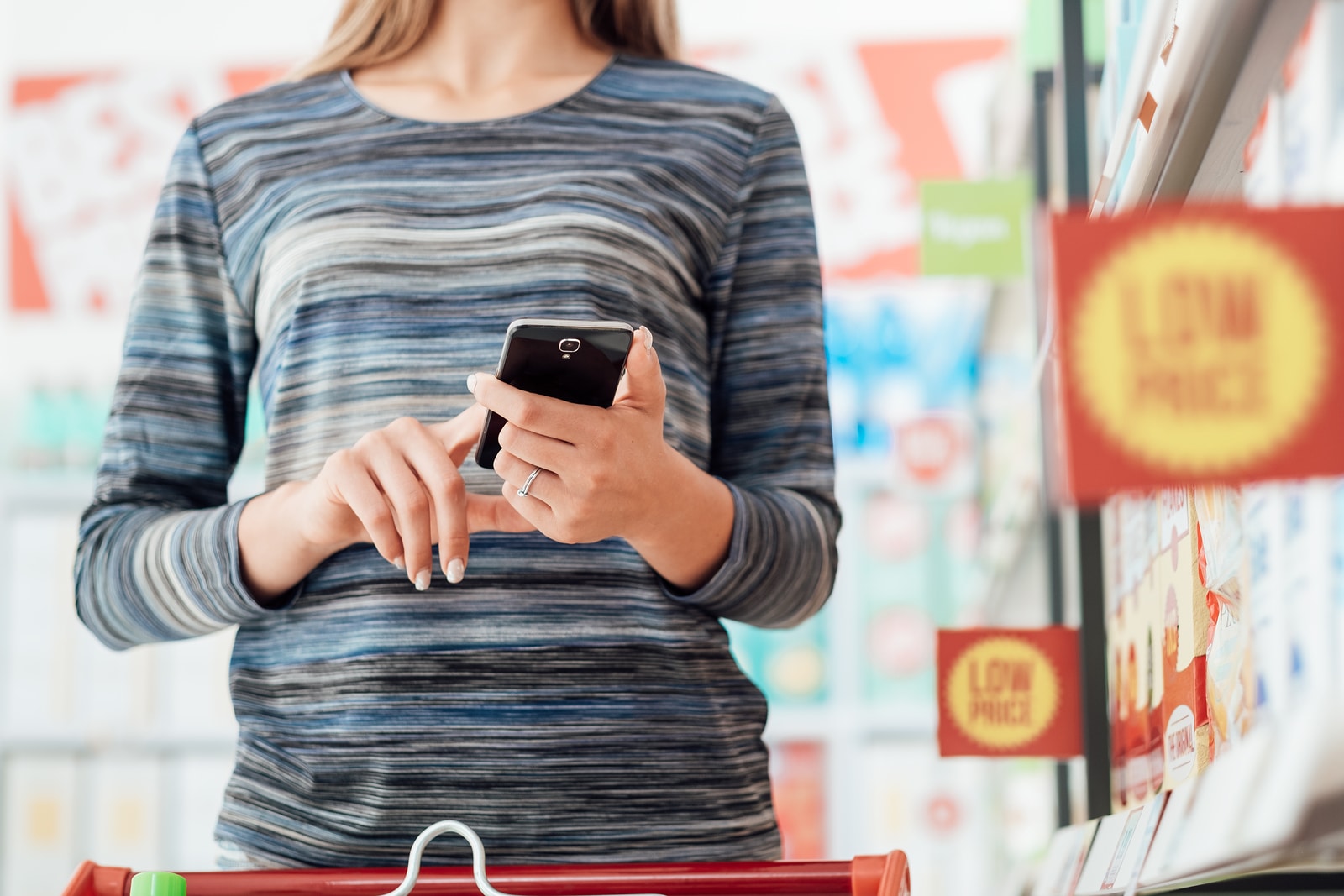Digital marketing is the solution managers often arrive at when they’re looking to increase a brand’s market share. Continue reading “How to increase market share of a brand in the digital age”
Category: Market Share
Creating customer value in retail: 5 ways to incentivize your customers
Creating customer value isn’t just about gaining more revenue from customers, it’s also about building relationships with modern customers to keep them returning to your locations. That’s not to say customer value doesn’t have its impact on revenue: Customers who think a retailer is providing excellent service spend 17% more than those who don’t. Part of that excellent service is making customers feel valued, and you can do that by incentivizing them.
 Often, we see the word “incentivize” and immediately think “discount.” Jumping to an immediate discount to incentivize customers isn’t the way to make them feel valued. In fact, lowering your prices could potentially lower their value perception of your products. To truly create customer value, you need to focus on five key factors in incentivizing your customer: personalization, engagement, rewards, recognition, and convenience.
Often, we see the word “incentivize” and immediately think “discount.” Jumping to an immediate discount to incentivize customers isn’t the way to make them feel valued. In fact, lowering your prices could potentially lower their value perception of your products. To truly create customer value, you need to focus on five key factors in incentivizing your customer: personalization, engagement, rewards, recognition, and convenience.
Strategy #1: Create Customer Value by Focusing on Pain Points
Pain points, in relation to retail, are the real or perceived problems that your customers are trying to solve when they visit your location. For retailers, this is obviously that they need products, and they need someplace to purchase them. These individuals could choose any retailer. Examining their pain points is how you’ll identify the unique service your location offers, which you can then use to make the customer feel you’re catering directly to them. Most pain points in retail can be broken down into four basics:
- Convenience: Customers may choose a specific location because it’s convenient for them, as it’s close to their home or workplace, or because it offers quick service.
- Cost: Price conscious consumers will generally seek out lower cost, discount options.
- Selection: A location may be chosen because a customer has specific needs. For example, they may choose to shop at an organic market due to dietary restrictions.
- Service: For some consumers, in-store services like bakeries, butchers, and deli counters are things they seek when they’re looking for a location to shop.
The best way to determine what pain points drive customers to your location is to survey them. Simply ask them to rank those categories in order of importance. Then, you can focus your efforts on catering to the most important. If access is the reason, seek out ways to speed up checkout. If service is what they want, offer more in-store amenities like cooking demonstrations or seasonal specials. This is a way to make customers feel like you’re catering to their very specific needs in-store. Another way to do this is through community engagement.
Strategy #2: Create Customer Value by Engaging With the Community
Customers don’t just want a store that makes them feel valued, they want one that values their community. Sponsoring local schools, sports teams, and other points of local pride—as well as sourcing local goods—serve to create a community connection.
Locally grown items are in high demand right now. By 2019, locally grown foods are expected to generate about $20.2 billion in sales, up from $11 billion in 2014. A retailer that wants to engage with the community can also take advantage of this movement by locally sourcing some items. This offers retailers a connection to the community that will make customers feel valued.
Strategies #3 & 4: Rewards and Recognition as a Means of Creating Customer Value
Rewards and recognition go hand-in-hand, as they’re ways to incentivize purchases while also showing appreciation for your most loyal customers. Rewarding customers is simple through a shopping rewards platform like Shopkick, which allows you to offer an incentive to shop while also limiting the cost to you. Here are a few ways that a shopping app program benefits both the customer and the retailer:
- Offers collectible points instead of discounts: With shopping app rewards, consumers receive points that they can use for future purchases. This offers the same incentive as a discount, without the same cost to the retailer because consumer perception of the value of points is often higher than the dollar amount.
- Promotes savings on future merchandise and return visits: It has been shown that about 47% of the time consumers prefer being able to save points toward future merchandise purchases over receiving an immediate discount. For the retailer, this point-saving encourages a return visit—and more spending—from the customer in the future.
- Ease of use trumps coupon clipping: For the consumer, a rewards program is much easier to use, especially when it’s tied directly to their smartphone. Instead of seeking out deals or clipping coupons, they’re able to collect rewards points simply by making purchases. For retailers, these programs are easier to keep track of than coupons and discounts.
With rewards programs, the benefits for retailers are twofold: You reward customers for visiting your location while enticing them to spend more, and you create loyalty and inspire return visits as customers feel recognized and respected by their retailer.
Strategy #5: Creating Convenience Through Tech
Consumers these days are driven by a need for convenience. They want to be able to find items easily and finish their shopping quickly. Nearly three-quarters of consumers report that technology has made it easy to take their business elsewhere. When consumers are looking for a retailer, technology can be a way to pull market share from your competitors. All you have to do is offer the technology that makes it clear you’re the more convenient choice. Consider app-based options like:
- Better budget planning – Consumers can get familiar with products and prices before they leave the house. This allows them to set a budget for their shopping that they can stick to, as they can get a good idea of how much they’ll need to spend before they get to the store.
- Product comparisons: Once consumers find the products they need during the preshopping phase, they can compare the available options. Consumers are savvy shoppers these days and are easily able to research items online. Offering the ability to compare products via mobile can help build confidence in your location.
- Alerts by geolocation: Consumers always appreciate the opportunity to earn rewards and in-store events, and app-based alerts can notify shoppers of these events while they’re in the seemingly endless shopping aisle.
Providing the technology that makes shopping easier for your consumers will make them feel valued. It will also help to create the connection that keeps consumers returning to your location, even when there are virtually limitless places they could take their business.
Creating customer value helps retailers build long, lucrative relationships. Personalization and community engagement work to provide an emotional connection between you and the consumer. Rewards and recognition show that you appreciate your customer’s business. Finally, convenience makes shopping with you easier than shopping with your competitors. All of these strategies incentivize your customers by establishing a mutually beneficial relationship.
Shopkick helps our partners create customer value by giving them the technology they demand while incentivizing their purchases using redeemable rewards points. For more information, contact us.
Image courtesy stokkete
Modern customer relationship building strategies for the digital shopper
Customer relationship building strategies are one of the cornerstones of marketing to help increase brand awareness, build market share and growth, and improve overall product perception. Many companies are seeking ways to leverage expansions in artificial intelligence and utilize smart technologies to create meaningful conversations with customers. Most modern customer relationship building relies on technology in one form or another, so knowing how to capitalize on will be an integral aspect of any given consumer-focused strategy.

It may seem contradictory to use technology to build customer relationships since technology often lacks a human touch, but tech is the most efficient way to manage thousands of customer relationships or more. The key is to temper technology-based responses with human ones, so customers still feel as though they are being heard on an individual level. By implementing new technology—beacons, bots, and mobile shopping apps—you can build a relationship with your customers that will keep them loyal to your brand without placing an undue burden on your resources or harming your bottom line.
Customer Relationship Building Strategies With a Tech Twist
Dollar Shave Club is a great example of a company that managed to segue personal customer relationships into a billion-dollar success story. The company made a name for itself by selling memberships to an automatic razor delivery service, but it built a brand off of its outstanding customer relationships by developing experiences for consumers that still include:
- Exclusivity: Members of Dollar Shave Club are given access to an insider newsletter and receive regular, personalized messages from the brand. Club members are also entered into a referral program that rewards them for inviting others to join the service.
- Engagement on social media: Users of Dollar Shave Club can post images of their deliveries to the company’s Facebook page. The brand then selects their favorite posts, and the winners receive a free T-shirt. Providing a creative and engaging customer rewards program—whether for points, merchandise, or cash back—can be a powerful relationship building tool.
- Rapid responses: The average response time to an email sent to the team at Dollar Shave Club is less than a day. Questions or complaints posted to social media sites are answered within a few hours. Rapid responses build trust between consumers and the brand and make their loyal subscribers feel their concerns are being considered and addressed.
- Personalization: Dollar Shave Club uses data from their customers to send occasional personalized messages and upgrade offers. Use of this data allows the company to promote highly specific products in their monthly email messages, which increases the likelihood of conversion.
Each of Dollar Shave Club’s strategies is dependent on delivering their message in a personalized way, so the consumer feels the brand is speaking directly to them. Technology allows Dollar Shave Club to maintain an air of personalization, while also advertising on a mass scale.
Tech That Automates Personalization for Building Customer Relationships
Technological advancements like machine learning, data collection, and artificial intelligence, are making it possible to deliver messages and engage customers without investing significant man-hours. This allows companies to leverage the flexibility of technology while maintaining a small, intimate atmosphere around their brand.
Here are just a few options that allow even large-scale companies to manage this strategy successfully:
- Auto response bots: Auto response bot systems are a new take on the touchtone hotlines of old. These systems are capable of recognizing important keywords and responding in a way that feels genuine. For example, a consumer might type in, “I’m having a problem with my billing.” The bot could then be set to respond, “I’m sorry to hear about that. Let me help you. I currently have your billing information as X? Is this correct or do you need to change it?”
- Customer experience managers: Customer experience managers, which are mainly database systems designed to collect and organize your customer data, allow companies to separate said data into various audiences for retargeting. So, in the example of Dollar Shave Club, a female consumer may be more concerned with razors for shaving her legs, while a man might be more interested in how to avoid beard rash. Or, an older consumer might have more issues with ingrown hair due to thinner skin, while a younger one might have problems with shaving cream irritating acne. All of these factors can be accounted for by implementing a CEM to personalize experiences for specific consumers.
- In-store beacons: Bluetooth-enabled devices that communicate with smartphones are helping build relationships with consumers as they’re in the shopping aisle, an aspect of mobile retail proximity marketing. Upon entering a retail location, a shopper’s mobile device receives a signal from a beacon if they have downloaded the retailer’s in-store app. The app will then offer the shopper deals, coupons, or location details for items he or she has previously purchased or shown interest in.
- Shopping apps: Shopping apps allow brands to connect with consumers at the very moment they are looking for advice on where to shop and what to buy. These apps often offer rewards for purchasing or scanning the barcode of a featured brand. This kind of incentivized shopping experience allows brands to build a relationship and understand buyer behavior.
Connecting with consumers must include developing a way to personalize their experience quickly, efficiently, and seamlessly. This is best accomplished via the use of technology. Shopping apps, in particular, allow brands to connect directly with consumers at the very moment they are planning to make a purchase or seeking guidance.
Customization and personalization, backed by technology, helped Dollar Shave Club build a following for their brand. They understood what was important to consumers and chose to connect with them in a unique way. This customer relationship strategy helped them build their audience on an individual level, even as they expanded into a billion-dollar business. And your brand can follow suit by using a shopping app to power your connection to your buyers.
Well-designed shopping apps that make everyday shopping more personal and rewarding can give you access to real-time customer data, allowing you to make in-the-moment and relevant recommendations. They also allow you to create a relationship with a customer which can turn them into a loyal user.
Shopkick helps our partners build relationships with consumers by offering them opportunities to earn rewards for engaging with your brand. For more information on how Shopkick can help you create a stronger consumer connection, contact our team today.
Image courtesy onephoto
Why market share is important for growth: A guide for CPG brands
When you’re green, you grow; when you’re ripe, you rot. This well-known adage speaks to the marketing concept that the only way a company can survive is through continuous growth. There is no standing in place when it comes to the consumer packaged goods (CPG) industry.

Continue reading “Why market share is important for growth: A guide for CPG brands”
How to increase market share of a CPG product using a mobile app
It’s no secret that many CPG product categories have fierce competition and are often purchased on price. This is perhaps why the CPG market is considered to be the most difficult for even established brands to grab a larger share of. If your goal is to increase market share, a mobile CPG marketing strategy that penetrates a consumer’s time in-store could help you achieve it.
 Mobile app marketing is a cost-effective method for increasing market share for CPG products. Alternative options, like ramping up advertising spend, are expensive and not always guaranteed to offer a significant return on investment. Marketing via mobile apps, however, can give you a competitive advantage by differentiating your product as they reach customers in the moment of truth in-storen, driving consideration for your product.
Mobile app marketing is a cost-effective method for increasing market share for CPG products. Alternative options, like ramping up advertising spend, are expensive and not always guaranteed to offer a significant return on investment. Marketing via mobile apps, however, can give you a competitive advantage by differentiating your product as they reach customers in the moment of truth in-storen, driving consideration for your product.
Below, explore how your company can leverage mobile tools like geolocation, timely contacts, and shopping rewards to deliver the conversion you’re seeking from your marketing dollars. Strategies for how to increase market share of a product can be as simple as partnering with a mobile app.
Common Barriers to Market Share Growth in the CPG Industry
There are several common market share growth barriers in the CPG industry that could block your attempts to gain attention for your products. These barriers are the things that keep consumers from choosing your product, despite advertising and shelf visibility, so you must find creative and effective ways to combat them in order to grow.
Generally, a market share growth barrier will fall into one of the three following categories:
- Loyalty: It seems odd to treat loyalty as a negative, but it certainly is when a significant portion of your product’s target demographic is loyal to a competitor. Customers who are already engaged with a brand are five times more likely to choose that brand’s products over another.
- Similar products: The CPG market in the US alone is worth $670 billion, which should confirm to any CPG marketer that competition is fierce. If your product is difficult to differentiate from others in its category, it can be next to impossible to make a dent in your market share. The less your product stands out, the harder it will be to garner new attention from consumers. This is especially true if your product’s price point is higher than your competitors’ without offering some additional benefit.
- Price point: About 10% of consumers are willing to stick with the lowest priced product, even when they’re aware of a similar product which will provide a superior experience. Consumers who are focused on price point will always be focused on price point. Because of this, pulling these consumers to your brand will only work if you discount your prices lower than others. However, as soon as your price increases again, you will likely lose that customer—and the market share they represent.
A majority of the issues that CPG brands run into when trying to increase market share for a product is that their barriers span all three categories. Their product may be difficult to differentiate from others and may not have the lowest price point, meaning they can’t gain the price-conscious consumers. However, they also haven’t earned the loyalty from consumers who are focused on quality over price. One strategy to stand out from the CPG crowd and combat each of these barriers is utilizing a mobile app to showcase and differentiate your product.
Learn How to Increase Market Share of a Product Using Mobile Apps
Despite the common barriers listed above, it is still possible to gain greater market share in your category. One of the most effective marketing strategies you should leverage is mobile shopping apps. These apps allow you to reach out to customers when they are in the moment of making a purchase decision. Third-party apps in particular, like shopping rewards apps, are ideal for increasing market share as they allow your brand to connect with a new and receptive target audience.
Here is how mobile apps help you combat the barriers to increasing market share of your products:
- Compete against lower price points without cutting prices: If you don’t want to lose margin by discounting, or want to focus on quality, shopping apps offer an alternative to incentivize price-conscious shoppers via rewards. While consumers don’t receive an immediate discount, they do earn rewards points for their purchases. This allows them to feel thrifty and budget-minded while eliminating the negative impact of discounted prices on your bottom line.
- Utilize geolocation to gain contextual relevance: Shopping apps can be designed to work hand-in-hand with beacons and other location technology. Via these technologies, shopping apps notify a consumer when they’re near your product and provide information about it. If you’re in a product category with high competition, this can allow you to gain the attention of your target audience at the right moment—i.e., when they are ready and able to make a purchase decision.
- Convert loyal customers with a trusted audience: Consumers who use shopping rewards apps tend to be very loyal to their favorite app. Often, their trust of the app will extend to any featured product or brand as well. This can be enough to pull a competing brand’s loyal customer to your side of the endless CPG aisle.
Shopping apps can increase your product’s market share without the high expense of awareness campaigns or competitor acquisitions. By partnering with a well-established third-party shopping rewards app, you can easily overcome common market growth barriers like competitor loyalty, lack of product differentiation, and price-focused consumers. Mobile shopping apps allow your product to stand out on overcrowded store shelves by communicating in the moment to an engaged and interested audience.
Shopkick’s mobile platform is used by a wide range of partners looking to increase their market share. If you’re interested in learning more about what Shopkick can do for your brand, contact our team today.
Image courtesy dolgachov
How to increase market share in retail using shopping apps
Consumers’ shopping behaviors are evolving as technology, and specifically apps, continue to give consumers greater access to store and brand information. Continue reading “How to increase market share in retail using shopping apps”
Creative Customer Rewards Program Ideas to Engage New Shoppers
While loyalty is important to maintaining a brand’s current market share, pulling in new leads is the catalyst for true growth. Increasing market share is easier said than done, however, as your company’s goal is the same as millions of other companies—and there are only so many consumers to go around. In a crowded, overly saturated marketplace, your brand must find a way to rise above the static and noise.
Continue reading “Creative Customer Rewards Program Ideas to Engage New Shoppers”
The Best Market Share Growth Strategies for Consumer Packaged Goods Companies
How CPG Brands Can Gain Market Share from Competitors Via Third-Party Shopping Apps
Competition among consumer packaged goods (CPG) brands is daunting; the industry is estimated at $2 trillion and most segments are highly saturated. In fact, an estimated 56% of U.S. consumers said the number of brands they consider for a given product or service has increased significantly over the past 10 years. It makes sense, then, that when brand affinity is not a factor, consumers will often make purchases based on price alone.

When markets are mature and saturated, it can be difficult for your brand to gain greater market share. Loyal customers want to stay with the brands they’ve already chosen. Cost-conscious consumers want the lowest price. Among all this competition, how can your brand hope to gain market share from its competitors? The answer is in leveraging digital marketing partnerships to reach new customers and build brand awareness.
The significant growth of the CPG marketplace over the past decade means that mass advertising and shelf placement are no longer sufficient to excite shoppers and convert them into customers. CPG brands often turn to coupons to entice and grow their customer base, but in the modern age of digital shoppers who are looking to deeply connect with a brand for more than just its price point, these steep discounts often result in nothing more than a one-time purchase—at a loss.
If your CPG brand wants to remain competitive in the new world of digital marketing, you need an alternative to the expensive discount programs of the past. This alternative can be found in mobile apps that drive consumers toward your brand as they shop. When consumers receive brand messages in real time while they are in a retail location, the sales funnel becomes short and effective, allowing your brand to naturally convert awareness into a purchase.
How Your Brand Can Leverage New Technology to Improve Market Share
In a study involving a diverse group of consumers, eMarketer noted that 73% of consumers cite price and value as top sales drivers. This hasn’t changed much in the history of selling CPG products. What has changed is how brands make consumers aware of their value and quality. Brands have to be able to gain the attention of consumers—and the digital space is the place where they must do it.
62% of millennials, one of the largest groups of consumers, use digital services to locate products. To gain the attention of these shoppers, your brand needs to shift its focus to the digital world, particularly mobile apps that travel with shoppers. The top benefits of mobile apps for CPG brands trying to determine how to gain market share from competitors are:
- GPS technology accompanies consumers on their shopping trips: Given permission, smartphone GPS technology allows companies to follow consumers throughout their day, offering mobile deals when they’re most likely to buy—and close to a store entrance. Those quick trips to the store can be used to remind consumers of a particular brand, ensuring it is at the forefront of their mind while they’re about to make a purchase.
- Online rapport with customers: 81% of consumers research products online before making a significant purchase—and that number continues to grow. With reviews, comparisons, and the like available at their fingertips, savvy shoppers are becoming increasingly likely to turn to the internet before a purchase. That means that you may be able to take market share from CPG companies that are without a digital presence simply by having one yourself.
As we review the statistics above, it becomes clear that a digital presence is crucial for any CPG brand competing in today’s retail market and attempting to gain market share over their competitors. However, developing an online presence requires time and significant investment, even for well-known brands like Band-Aid or Kleenex, names synonymous with a particular product. 2 million blogs, according to Hosting Facts, are published every day, with countless brands all trying to create an online presence.
Brand awareness is a major component of gaining market share. That’s no secret. But gaining that brand awareness requires the ability to stand out on digital platforms, which are often saturated with other brands attempting to do the exact same thing. To gain an edge in a highly competitive market, your CPG brand can’t start at square one. Instead, you need to find a way to use strategic partnerships to gain notoriety in the digital space.
Building Partnerships with Popular Shopping Apps

Instead of a high-cost, full-scale online marketing campaign, many brands are finding ways to work their way further down the sales funnel, reaching out to consumers where and as they shop. By leveraging the ease and flexibility of existing mobile retail apps, CPG companies can incentivize consumers without damaging their bottom line. Partnering with popular app offerings which have an established foothold in the retail market offers brands the opportunity to build product awareness and consumer trust which, in the end, leads to a greater share of their target market.
How is this accomplished? Consumers want to feel like fiscally savvy shoppers. However, CPG brands, often operating on slim profitability margins, can hardly afford to slash prices to make a sale, especially since this can lead to long-term devaluations of their brand name. After all, greater market share and customer loyalty don’t necessarily equate to profitability. Shopping apps that aggregate rewards from partner brands benefit both the consumer and the brand in three ways:
- They can help reduce overhead associated with a full-scale digital marketing campaign: A full-scale digital marketing campaign is not a cheap endeavor. However, by working with an established app as a part of their entire marketing campaign, brands are able to reduce some overhead costs.
- They target motivated consumers: Shopping apps don’t target the general population. Instead, they target consumers who are interested in learning more about products. When consumers download these apps, they want the app to contact them about the brands they partner with. Rather than simply advertising at consumers, these apps interact with consumers. That interaction leads to brand affinity and ultimately larger market share down the road by creating a value exchange between the brand and the shopper.
- They offer an existing audience base: One of the biggest challenges in app marketing is gaining adoption. This is particularly challenging for CPG brands as consumers are very unlikely to download an entire app focused on one single product. This is why established shopping apps are ideal for CPG brands: they offer a built-in audience.
CPG brands spend roughly $225 billion on marketing each year, with discounts that cut into margins. Brand managers are beginning to approach marketing in a new way, however. App-based advertising programs are becoming a highly profitable addition to digital marketing strategies as they draw in consumers without requiring companies to compete at a loss.
Brand awareness breeds greater market share. Partnering with the right shopping apps can significantly increase awareness of your brand, allowing you to claim a greater share of your market segment from your non-digital competitors. By leveraging strategic partnerships with popular mobile shopping apps, your CPG brand is given access to an active user base in the digital space—and all without the risk and high cost of a stand-alone digital program.
Shopkick offers our retail and CPG brand partners a new voice in a saturated marketplace. To connect with Shopkick, contact us today.







